At YJCPolymer, we understand that creating durable, high-quality parts that meet performance and aesthetic requirements can be a challenge. One solution that has gained significant traction in recent years is overmolding—a process that combines multiple materials into a single, unified component. Whether you’re designing for medical devices, consumer electronics, or automotive applications, overmolding offers an ideal solution to meet your most complex component needs.
From formulation and design to prototyping, testing, manufacturing, and assembly, we provide the comprehensive overmolding solutions needed to tackle your toughest challenges.
What is Overmolding?
Overmolding is a highly versatile manufacturing process where a second material is molded onto an existing substrate, often resulting in components that are stronger, more functional, or aesthetically enhanced. For example, you can add a soft grip to a hard plastic handle or combine materials to create weather-resistant seals for electrical connectors.
At YJCPolymer, we specialize in rapid overmolding, a process that ensures cost-effective, high-quality parts in a much shorter turnaround time. By using mechanical or chemical bonding, or even both, overmolding creates permanent, durable connections between the substrate and the second material, eliminating the need for secondary assembly processes. This reduces costs, improves product integrity, and enhances the overall design.
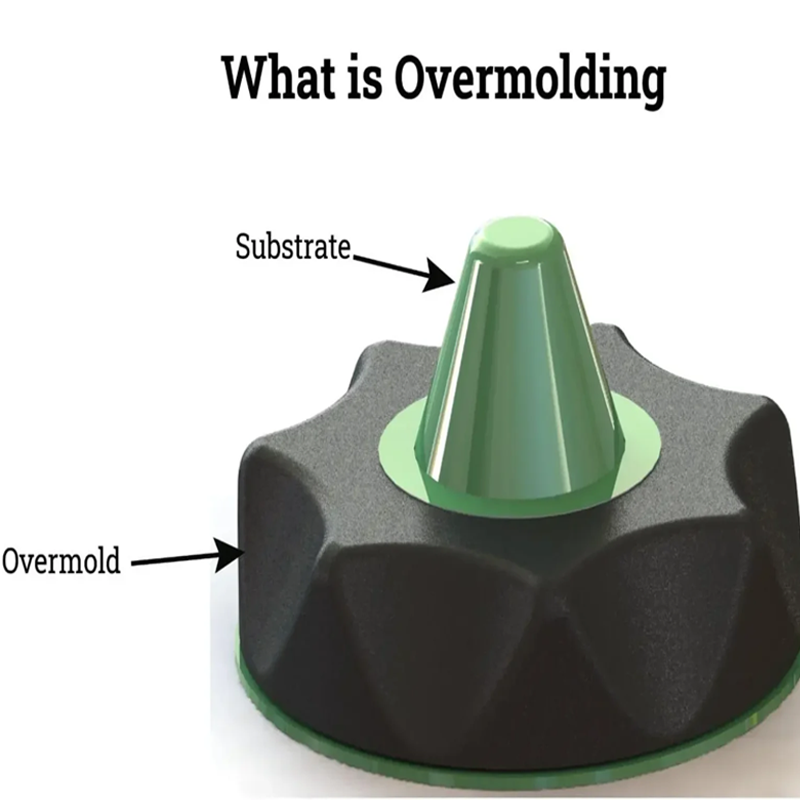
3 Key Elements to Consider When Designing for Overmolding
Before embarking on an overmolding project, it’s essential to understand three crucial elements that will determine the success of your design: bonding, materials, and principles. Each element plays a vital role in ensuring your overmolded parts perform as intended.
-
Bonding: The Foundation of Overmolding Success
A successful overmolding process requires a strong bond between the substrate and the overmolding material. A perfect bond will ensure the overlay is tightly adhered to the original component and cannot be easily removed. For instance, materials like TPU (Thermoplastic Polyurethane) and TPC (Thermoplastic Copolyester) form excellent chemical bonds with ABS and polycarbonate substrates.
However, achieving an ideal chemical bond is not always possible, especially when the materials involved have different properties. In these cases, mechanical interlocks—like undercuts, counterbored holes, or reverse-tapered features—can enhance the bond strength. Mechanical interlocks work by creating physical spaces where the overmolding material flows, locking the parts together and ensuring durability.
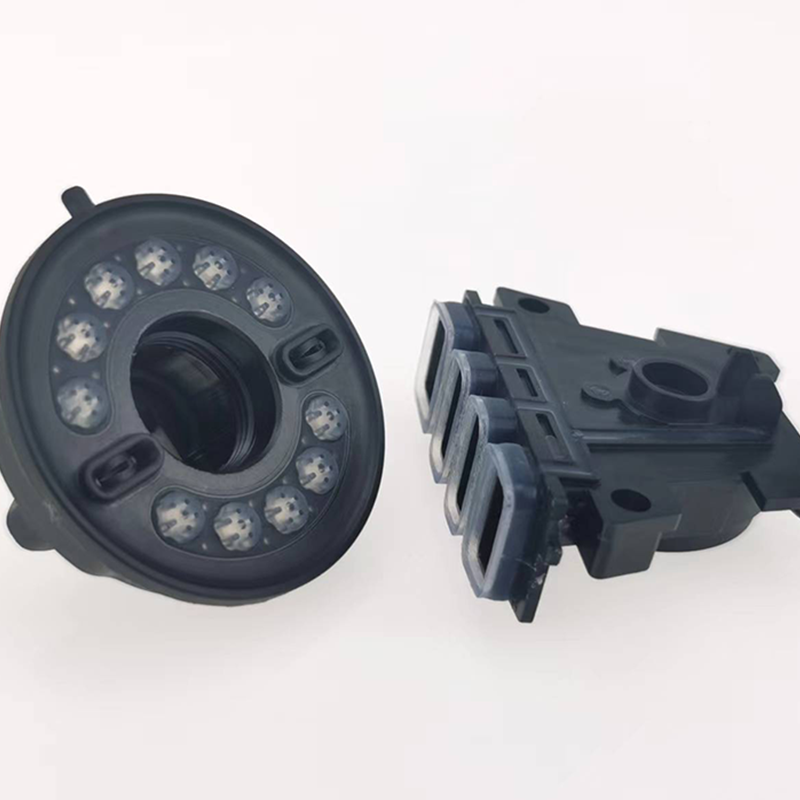
At YJCPolymer, we provide extensive design guidance to ensure that every overmolding project meets the strength and performance requirements, no matter the complexity.
-
Materials: Choosing the Right Pairing
The choice of materials for overmolding is crucial to ensuring the part performs optimally. The key is to select substrates and overmolding materials that are compatible with each other in terms of physical, chemical, and thermal properties.
Common materials used in overmolding include:
– Liquid Silicone Rubber (LSR): Ideal for applications requiring flexibility, high tear strength, and resistance to heat, water, and UV light. LSR is commonly used for medical devices, consumer electronics, and automotive seals.
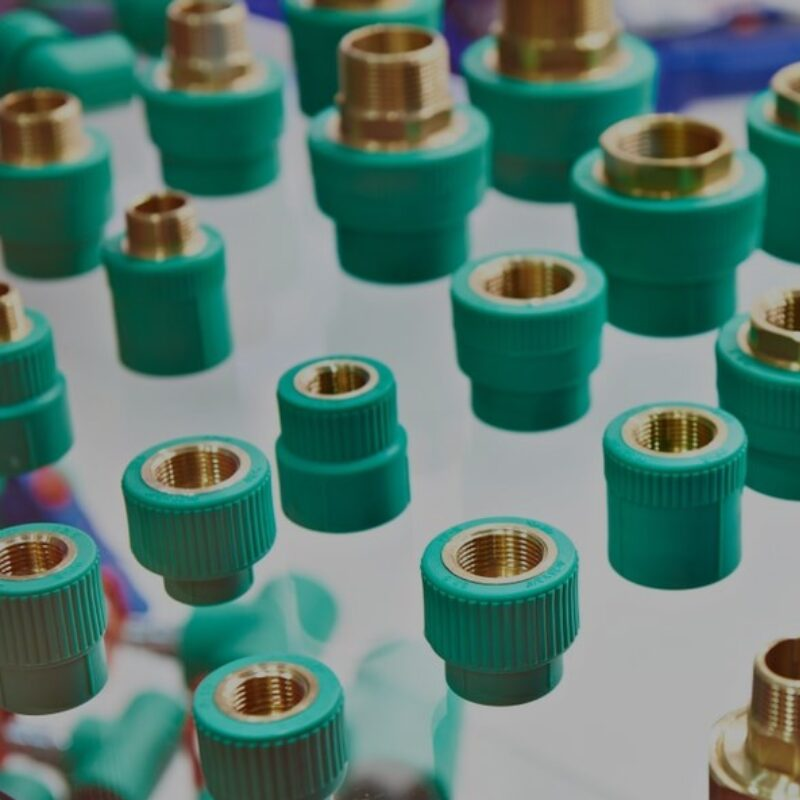
– Thermoplastic Elastomers (TPE): These materials combine the properties of rubber and plastics, offering high durability, flexibility, and excellent grip, making them perfect for consumer products like power tool handles or medical devices.
– Plastics: Materials such as Nylon, Polycarbonate, and Polybutylene Terephthalate (PBT) are often used as substrates. These offer rigidity and lightweight properties, which can be enhanced by overmolding with softer, more flexible materials like silicone or rubber.
At YJCPolymer, we help you select the best materials based on your part’s operating environment, production method, and cost constraints, ensuring compatibility and optimal performance. Our Advanced Materials Group works closely with the design team to recommend the right bonding agents and materials for every overmolding project.
-
Principles: Overmolding Design Rules
Although overmolding follows many of the same design principles as traditional injection molding, there are a few additional considerations that are unique to the process. Adhering to these principles ensures that your overmolded components meet design specifications while maintaining functionality:
– Draft Angles: Both parts (substrate and overmold) must have proper draft angles to ensure they can be easily removed from the mold.
– Wall Thickness: The overmold material’s thickness should not exceed that of the substrate. This ensures uniformity and prevents issues like warping or internal stresses.
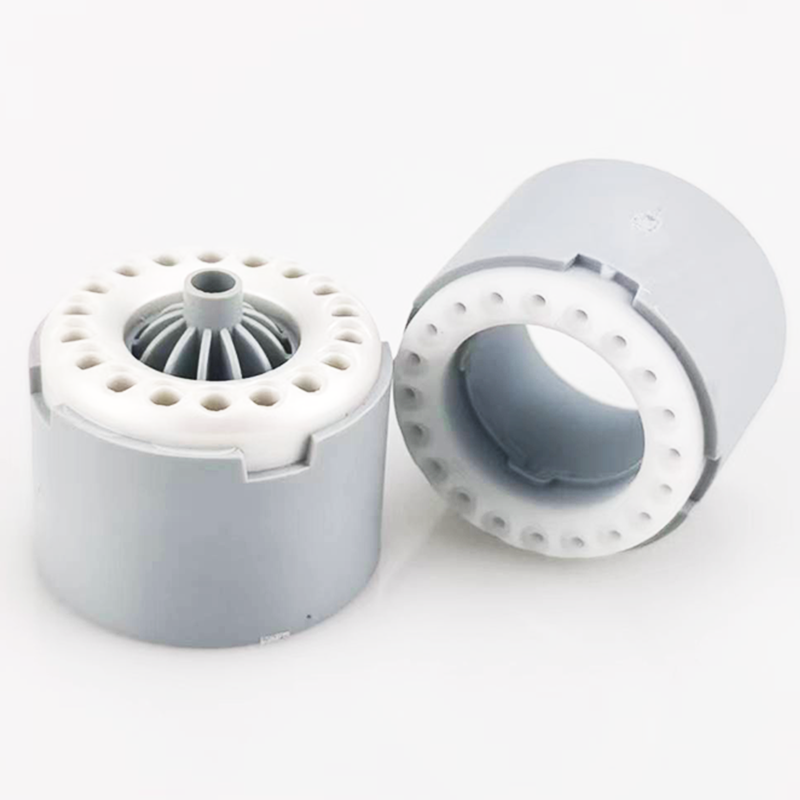
– Material Compatibility: Ensure the melting temperature of the overmolding material is lower than that of the substrate, particularly when using materials like LSR.
– Texturing: Surface texturing not only enhances the product’s appearance but also improves adhesion and grip. A textured overmold can make a product more ergonomic and visually appealing.
By considering these fundamental principles, you can optimize your part design for successful overmolding production, ensuring both high performance and aesthetic appeal.
Why Choose YJCPolymer for Overmolding?
At YJCPolymer, we specialize in rapid overmolding and bring years of expertise to each project. Our team offers:
– Preliminary Engineering Assistance: We help determine whether overmolding or assembly is the best option for your component, advising you on bonding methods and substrate selection.
– Material Expertise: With a vast range of thermoplastic and silicone rubber materials, our experts will recommend the best material for your overmolding needs, based on your product’s operating conditions and required performance.
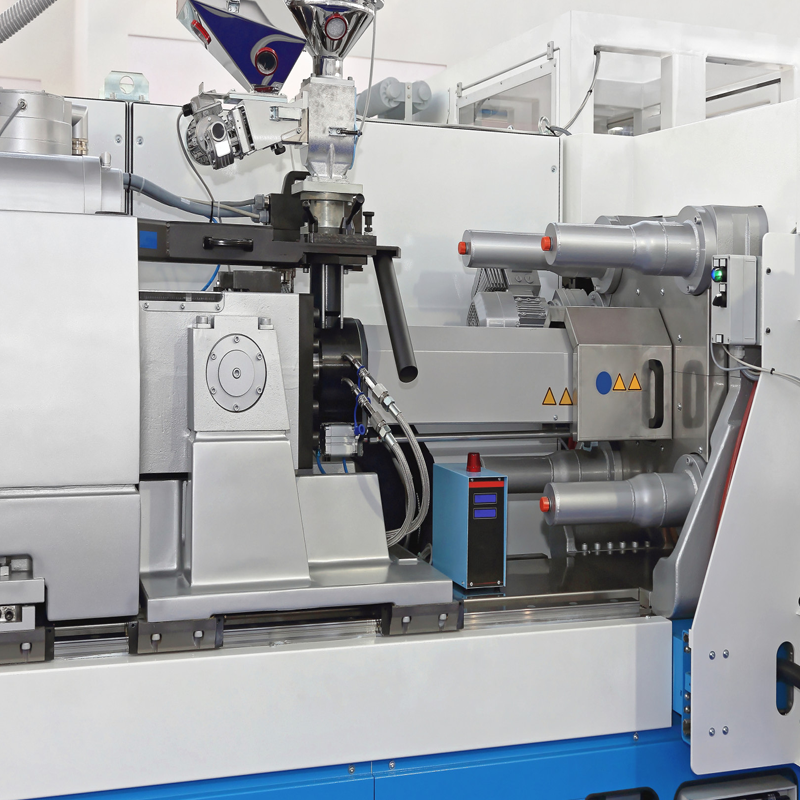
– Finite Element Analysis (FEA): We use advanced simulation tools to model and test your design before production, ensuring that your parts perform as expected.
– Fast Turnaround Time: Our rapid overmolding process allows us to produce parts quickly, with production quantities ranging from 25 to 10,000 parts in about 15 days.
We’re dedicated to helping you take your design from concept to finished product. Whether you’re testing prototypes or scaling up production, YJCPolymer is your trusted partner for all your overmolding needs.
Get Started Today with YJCPolymer
Overmolding is a powerful technique that can enhance the functionality, durability, and aesthetics of your products. With YJCPolymer’s expertise, you can ensure that your designs are optimized for performance and cost-effectiveness.
Ready to get started? Upload your 3D CAD model at YJCPolymer for an interactive quote within hours. Our team is always here to guide you through the process and help you solve your most complex design challenges.We look forward to working with you!